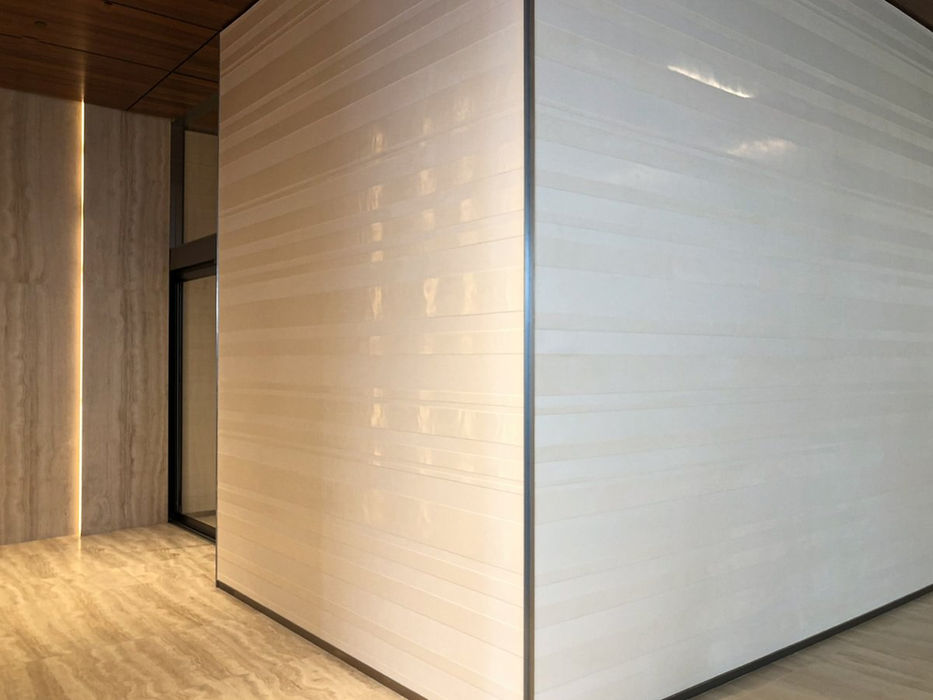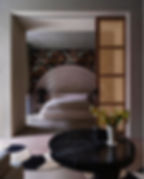PLASTER FINISHES
Traditional Limestone Plasters
Marmorino is one such example, with marble dust added to it to produce a fine-grained surface and produce a thicker finish. Venetian plaster is a stone-like finish that can be customized to a variety of different textures and tones. To create a polished plaster, lime is compressed during the application process, and various techniques are used to control the amount of sheen. Knock-down plaster is done by a special technique that creates a luminous, rustic look with plenty of texture and contrast by applying a lighter-colored limewash over a darker Marmorino plaster which is then sanded back.
Tooled Plasters
A variety of tools are used to make an array of lines and nuances, producing textured plaster finishes such as striped, combed, and striated plaster, as well as those meant to imitate fabrics like a linen weave and nubby woven wool. SuperStrata developed a plaster technique which we named “Memphis,” which is similar to woven plaster, just with the underlying texture applied in one direction.
Aggregate Plasters
Earth-like surfaces can be created by adding elements such as semi-precious stones, clay. Cocciopesto uses bits of clay which break and smear during the application, while Peppe Sal imitates the look of pepper and salt when tiny black and white aggregates are introduced.
Metal Plasters
These consist of various polymers and real metal fibers which produce an effect of solid metals such as bronze, steel, aluminum, zinc, copper, and iron.
Japanese Plaster
Otsu, kiwado, and shikkui are just a few types of Japanese plaster, and each have their own slight differences in components. For example, shikkui is made with slaked lime and calcium which often includes additional ingredients like seaweed extract and diatomaceous earth.









































_edited_.jpg)









